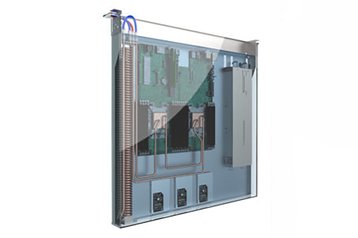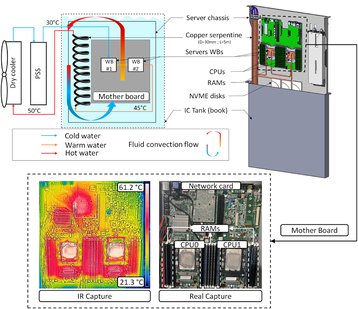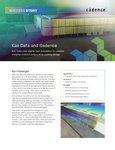OVHcloud has published research showing benefits from its hybrid liquid cooling technology, which uses both dielectric fluid and water in vertically-sealed server tanks.
The European cloud provider has tested a system in which the whole server is encased in a tank holding a dielectric fluid providing passive immersion cooling while water flows through a system of pipes and coils within that tank to remove heat while providing more cooling to hot components including the GPU and CPU.
The operator found that the combined system reduced the data center's energy consumption by 20 percent compared with using water cooling on its own.
Water cooling in data centers can be a controversial subject. A recent fire at a Global Switch facility in Paris was caused by a water leak - at least according to the tenant Google, as Global Switch refuses to comment.
OVHcloud's own disastrous fire in 2021, which burnt down a data center in Strasbourg, was not related to cooling systems though a firefighters' report said that moisture was found near electrical systems just before the fire broke out.
OVHcloud has used its own water-cooling technology at its data centers for some years without incident. The company has a water circulation system within each rack, in which flexible pipes carry water to the chips where heat is most needed. The rest of the systems are cooled by outside air, without the need for air conditioning.
In 2022, OVHcloud announced the hybrid system in October 2022, and described it to the Open Compute Project at the OCP Summit that month.
The new system mounts servers vertically in racks like books in a library. Each one is a separately sealed unit, containing dielectric immersion cooling fluid, which provides passive cooling. The fluid is not circulated, but removes heat by convection, passing it to the water cooling pipes which pass through the server tank.
In this month's Case Studies in Thermal Engineering, researchers from OVHcloud and the University of Reims Champagne-Ardenne, publish a paper describing tests on the new cooling system. The authors include Guillaume Polidori and Chadi Maalouf from the University, while OVHcloud provided Mohamad Hnayno, Ali Chehade, and Henryk Klaba (the engineer father of OVHcloud founder Octave Klaba).
The team tested different cooling fluids and found that fluids with a low viscosity flowed better providing better cooling in the passively-cooled immersion cooling tanks. Doubling the coolant viscosity (from 4.6 to 9.8 mPas), the cooling performance decreased by around six percent.
The group also measured the energy used in cooling, and found that the combined system reduces the electrical power consumption by "at least 20.7 percent" compared with the existing water-cooling system on its own.
Zeroing in on the individual chips, the researchers say that the combined system reduced the energy required to cool each server went down by seven percent over a year, compared to the existing liquid-cooled system, and was 20 percent less than using an air-cooled system.
Finally, for those scoping out liquid cooling systems, the team answers the question: how much water does it take to cool a server?
The research produces a useful single figure - from 50ml to 100ml of water per hour, for every Watt of server power.





